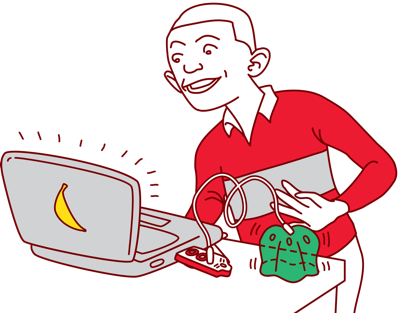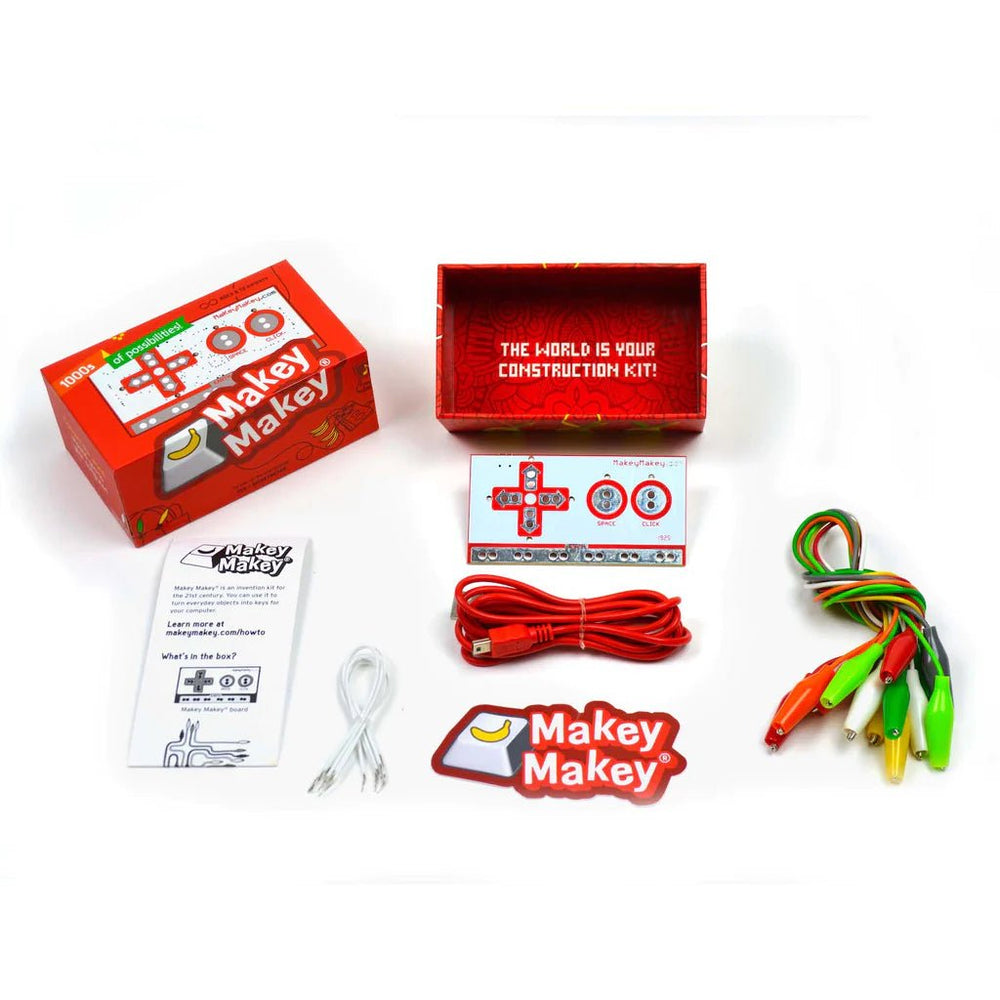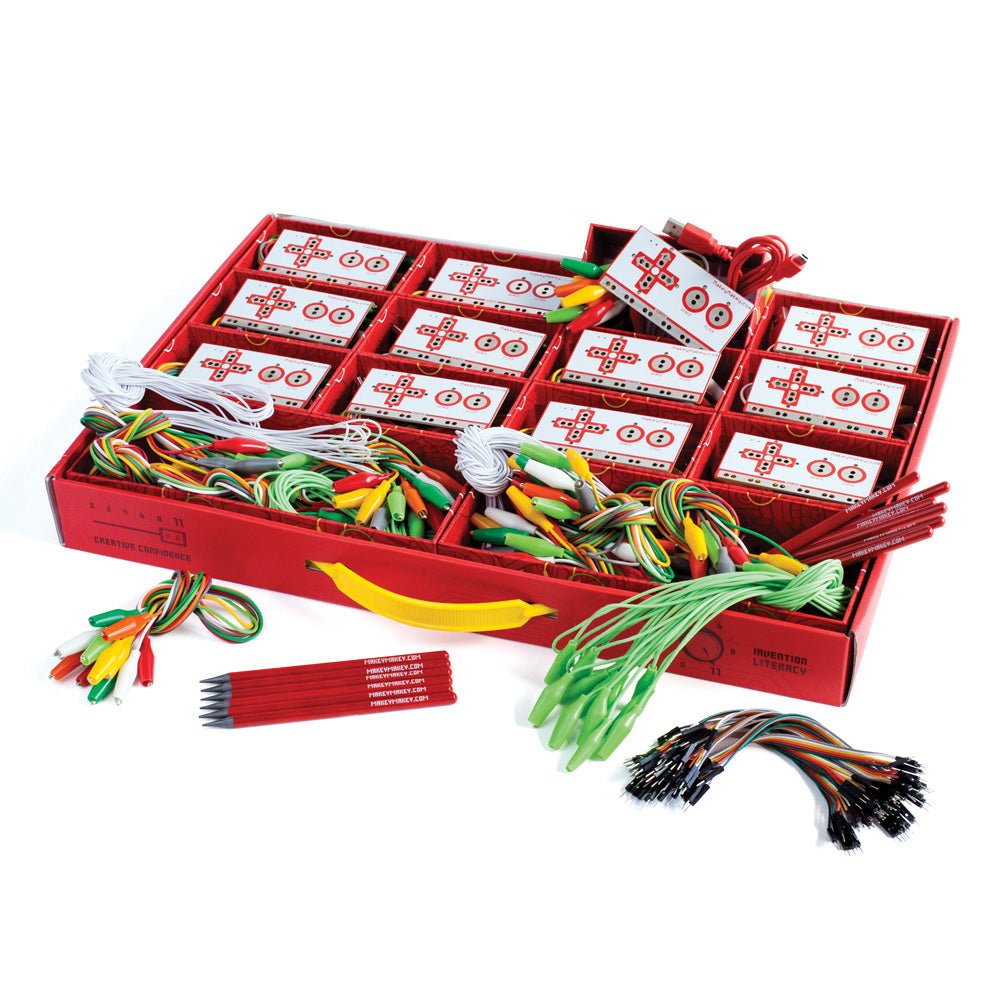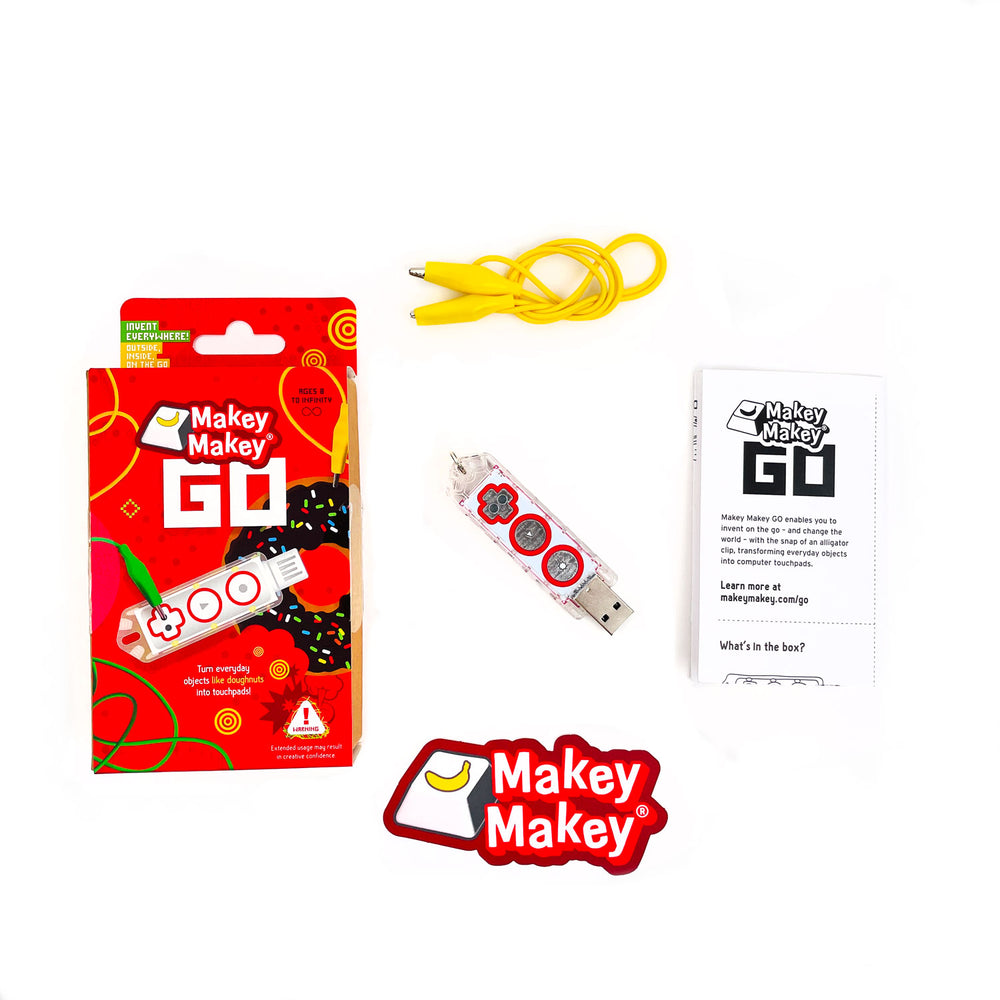Featured Educators: Michele Morgan and Jennifer Schank
We are so stoked to share this month's featured educators with you! These ladies are utilizing Makey Makey in their occupational therapy practice to help clients in new and innovative ways!
Tell us a little bit about you:
Michele Morgan: I am an occupational therapist, amateur machinist, makerspace enthusiast, and mother of 2 boys. My introduction to tech-inspired makerspaces began with a search on ways to inexpensively monitor the temperature and Ph levels in the aquaponics system in our school-based workshop for students with disabilities. That experience opened the door to the world of Arduino microcontrollers and Raspberry Pi micro- processors. My experiences with the Makey Makey led to a collaboration with colleague Jennifer Schank. Together we co-authored an article on the benefits of incorporating a maker mindset into practice. We are developing seminars to promote the incorporation of the Makey Makey to provide meaningful occupation-rich experiences with students and clients in any setting!
Jennifer Schank: I’m an occupational therapist, wife, and mother of three. This is actually my second career. Previously, I worked as a product designer at Johnson & Johnson creating online health interventions. My design background informs my I approach to therapy sessions. I try to build a patient’s progress, but engage them so it doesn’t feel like work. I love sharing my enthusiasm for technology and occupational therapy by teaching workshops for students from middle school to college-level as well as for OT professionals.

Tell us a little about Occupational Therapy:
Michele: Generally speaking, Occupational Therapists develop, improve, or restore independence for clients across their lifespan who have experienced injury, illness, disability or psychological dysfunction.
In my role as an Occupational therapist in a school setting, I help students participate in activities that hold personal meaning and value, while preparing them for success in life and work after high school. Working in a machine shop with students who have physical, cognitive and emotional issues often requires modifications to traditional workstations, and the Makey Makey provides accessibility to my machines, helping to create a truly inclusive makerspace!
Jennifer: Occupational therapy helps people of all ages get back to the activities they want, need, or have to do. "Occupation" refers to everything we do that takes up time in our life. So therapy sessions may focus on anything from building up social skills with others to developing grip strength and coordination to care for their baby. Occupational therapists address such a wide range of challenges and therefore work in a variety places such as hospitals, schools, mental health settings, early intervention, palliative care, and even prisons.
Wow! It sounds like you are already doing great work! How do you use our little invention kit with your students and clients?
Michele: At the high school level the Makey Makey is used to create access to machines for students with significant physical impairments. At the elementary level, I use the Makey Makey to increase motor and sensory engagement for students who use technology as rewards during the day as part of established behavior plans.
These experiences empower students since the students are directly involved in the design and manufacturing of the Makey Makey interface. Students in the machine shop guide the design of the workstation and collaborate with therapists to make sure we have considered their current physical abilities in creating the necessary connections between their fingers and the inputs.
For example, this student with limited mobility is able to use a grounding bracelet, foil, and Makey Makey to operate this laser cutter in the makerspace.

At the elementary level, we collaborate with students to select the textures and meaningful objects when creating physical representations of directional keys during gaming. This provides a sense of individuality and meaning for the time spent on the computer and adds graded sensory input to address multiple goals in our sessions!
Here a student has replaced traditional directional keys with texture-rich digits.
Jennifer: How I use Makey Makey in a session really depends on the goal of my client. I look at a patient’s supports and barriers to reaching their goal and what could be accomplished in the short and long term. Many factors are taken into consideration.
Here is an example of someone with physical disabilities: There was a client with the C1-3 spinal cord injury. In previous sessions, the client used a whistle or blowing exercises to improve oral-motor skills. I could see that a game would be great so do with her since it’s repetitive. I had made a simple computer game for another client, but I struggled with how to interface with a computer game using only breath. At my kids STEM fair, the student next them had a Makey Makey banana piano and it struck me. I knew that I could use it to make her a “blow switch.” I took two book case ends wrapped it in aluminum foil and added a flexible tab she could blow on it for her spacebar. This allowed the client to do the same therapy, but also be able to play real games like everyone else. During the session, the client was laughing and playing Flappy Bird and Geometry Dash like it was the most fun she had done in awhile.
Here is the "blow switch" after many iterations:

When I was at at mental health setting for people 55 and up, I used a Makey Makey to increase engagement in social groups. The patients loved playing Wheel of Fortune, but space was limited for gameplay. We used this activity to increase participation and social skills but I wanted to see if I could get the game on a large screen tv in the social room. I remixed a game with custom phrases and designed a simulation of the Wheel of Fortune puzzle board. One important addition that gamified this version was a virtual wheel that the seniors could spin by pressing a space bar on the computer. This was great because it added in pretend money and the chance for players to hit “bankrupt” or ”lose a turn.” I still wanted to add a way for clients to engage directly with the game and control the wheel, so I linked a large squishy momentary button to the computer that could act like a spacebar using a Makey Makey circuit board.
This addition of controlling the game with a simple switch and having that element of chance at each spin of the wheel was, for some people, really transformative.
I remember one person in particular that at the start of the session was very quiet and showed little interest in being in the group. After a few minutes of playing the game he became loud, assisted others on gameplay, and would perform a large wind up move to press the spin button. Many of the people in the group demonstrated full engagement in a leisure occupation and were able to work together in an activity that was fun and novel. Sometimes just finding joy in being with others is a hurdle for some. For a time, I believe this hack helped many experience joy and connectedness with others.
Tell us about how you help train other Occupational Therapists?
Jennifer: For the past year and a half, I’ve been sharing what I’ve learned at the Digital Divas Conference. It is a one-day conference held twice a year that “encourages and engages female middle and high school students in technology careers while giving them an opportunity to meet and network with professors and students.” I created a workshop for it called the Experimental Game Lab. My hope was that the workshop could be a springboard for these students to learn groups skills like: how to negotiate and work together; develop confidence in the creative process of conceiving, failing, and trying again. During the workshop, kids learn how to use Makey Makey to create an interface for games. Kids that are excited for more of a challenge are given clients like an Occupational Therapist. plus they are given a description of the client's current activity in therapy. As a team, the students develop an interface and pair it with a game. It’s great because it exposes them to some simple principles of occupational therapy. Plus, these students gain confidence in tinkering and exploring with electronics.
I’ve also been sharing strategies for using Makey Makey as a therapeutic intervention tool as a guest lecturer for Eastern Michigan University's Occupational Therapy program. The Makey Makey is a great tool for therapy as well as a great way to teach therapeutic problem solving. This is a great test for pre-service therapists. By therapeutic problem solving, these university students are able to learn how to create a “just right challenge" which will help a client to make gains toward specific goals.
Because the students are creating the interface they are only limited by the tools and their imagination.
The university students create an interface with Makey Makey and also have to consider what game to pair with the interface that will create this "just right challenge."
By choosing and pairing a game, the students have to consider many therapeutic elements like: the game’s cognitive demand, the pace of the game, and coordinating the Makey Makey interface with the game. These are all actual things an Occupational Therapist must do on a regular basis in practice. However, by using Makey Makey, the students are able to gamify the therapeutic process and apply their new techniques to something with controlled variables because the students are actually creating the interface.
Check out this example where a student created a game for sensory defensiveness towards taste and texture. She is holding one side of the circuit and when her tongue touches the gummy bear, this is what closes the circuit so she can play the game.

Here a student group created an intervention to address grip, upper body movement and coordination. She’s playing Whack-A-Mole with three plates for the mole holes and the sword is ground.

For this client, the team wanted to improve upper body movement, coordination, and balance. She’s playing Dance, Dance Revolution, but the ground is at her feet and the four game pads are placed adjacent, on three walls and she's playing Dance, Dance with her upper body instead of her feet!

For this last student invention intervention, she wanted to improve hand function. So she’s playing Whack-A-Mole with one hand. The pad on her thumb is ground and the pads on her three fingers act as the “mole hole.” She has to touch her thumb to each finger to whack each hole.

This is really such a cool way to Makey Makey! What's next?
Michele: I plan on educating others about the Makey Makey in my role as a fieldwork educator with graduate level OT students and OT assistants. I hope to illustrate to all prospective therapy practitioners that the Makey Makey can be used in any setting to meet goals for clients of any age and at any level of function. For my students, the Makey Makey is a must have for an inclusive makerspace!
Jennifer: I’ve really enjoyed using and teaching about Makey Makey in occupational therapy. I plan on using it in my own practice and continue to teach it in the community. Check out our site mOTivated maker to find an upcoming workshop for therapists and educators. Follow our work via our blog.















